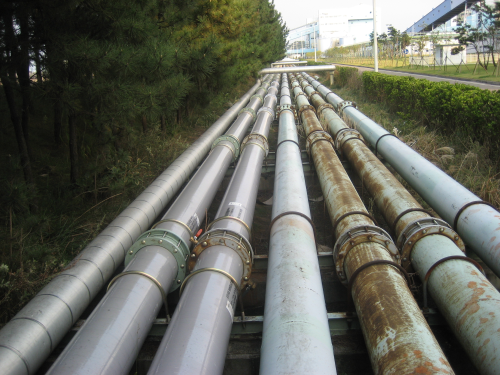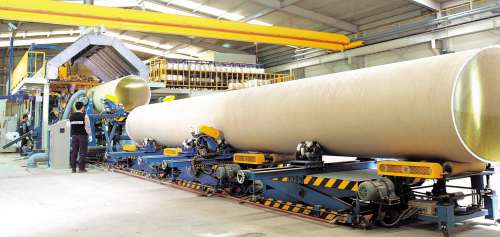

These pipes are primarily installed to facilitate transfer of the residual ash – a by-product of the thermoelectric power generation plants. Most of the pipes currently in place are made of cast iron, which are costly, heavy and rust over time. The introduction of abrasion resistant composite pipes has seen improvements in durability.
The HFG abrasion resistant composite pipes have been installed in various coal fired electric power plants. On examining some pipes that have already been in use for four years some abrasion has been detected. This is minimal and the result is a small reduction in the thickness of the inner layer of the pipe. However, no breakages or perforations have been found, nor any leakage detected, suggesting that the lifetime of the composite pipe is expected to be in excess of twice that of cast iron pipes.
By at least doubling the life expectancy of these pipes, coal fired plants using the abrasion resistant composites piping, can expect significant savings. Laboratory results of Tabor abrasion testing comparing the composite pipes with the cast iron pipes, suggest that composite pipes prove to be a better choice than cast iron by a factor of 10.
| Weight loss (mg) | |
| Specifications | <40 mg |
| HFG abrasion resistant composite pipe (EPOVIA based) | 7 mg approved |
| Cast iron | 72 mg rejected |
HFG is using continuous filament winding system to manufacture pipes between 150-3000 mm in diameter. Ash transfer pipes are comprised of EPOVIA® vinyl ester resin and abrasion resistant fillers. Typical pipe installations are 300-350 mm in diameter and 15-20 mm in thickness. The inner layer is manufactured by continuous filament winding by mixing vinyl ester resin with abrasion resistant fillers, wound with glass fibre. Problems that would usually occur owing to the use of abrasion resistant fillers such as poor fibre wetting have been overcome with resin improvements and the manufacturing process itself.
The outer layer is made only of vinyl ester resin, passing through a filament winder with glass fibre and then finally cured and cut to length. For the vinyl ester resin, EPOVIA® KAYAK KRF-1001 – a low foam, pre-promoted & high heat and abrasion resistance grade of Bisphenol-A epoxy acrylate resin – recently developed by Cray Valley, was used. Abrasion resistant fillers of alumina/silicone carbide were employed in the system.
Based on the successful application of abrasion resistant pipes to small diameter pipes, HFG is extending its application to large diameter abrasion resistant pipes, with increasing orders from various thermoelectric power plants in Korea. Additional opportunities are also arising in the nuclear power plant industry for sea water handling.






